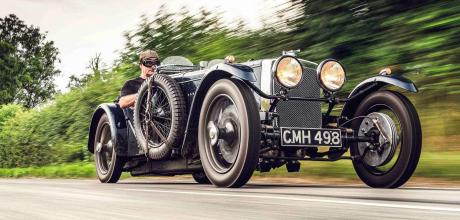1935 Frazer Nash Shelsley
This 1935 Frazer Nash Shelsley has illustrious early history — but disappeared into obscurity. Now it's back to tell the tale. Words Simon Charlesworth. Photography Jordan Butters.
FRAZER NASH SHELSLEY
1930s racer with illustrious history
Owner Mark Morgan’s instructions were to be assertive with the crash ’box’s external gearlever — except that this is an especially significant Frazer Nash Shelsley. Finally, and thankfully, the knack is attained, ending the problem of consistently finding first gear. No easy task. Let’s just put it down to character.

If you accept that old cars tell stories, then this Nash must be among the most accomplished of raconteurs. Chassis no. 2149 was delivered on 4 April 1935 to Dudley Folland Esq, who — due to maternal disapproval — had been racing under the nom de volant of ‘Tim D Davies’ at Cambridge University, The son of the Folland Group’s late founder Henry, Folland had bought the Nash (registered CMH 498) to replace the MG Q-type he’d wrecked after a blown tyre during Inter-Varsity Speed Trials.
'As speed grows, the burly boxer-like exhaust note is overwhelmed by the cacophony of roaring wind'
His new car was built to works racing specification, complete with all the ‘twos’: a two-seater body, twin Centric superchargers and two SU carburettors. In the Frazer Nash family tree, CMH 498 would be the older sister of CMH 500, a Shelsley-chassis’d TT Replica belonging to AFP Fane. Fane, being a regular customer, noted Nash racer and Cambridge alumnus turned AFN Ltd director, was probably the reason for Folland’s change of allegiance from Abingdon to Isleworth.

The Shelsley, unlike most of its ‘chain gang’ kin with Meadows, Anzani or Blackburne engines, followed in the tracks of its older TT Rep sister in 1934: the latest model could be specified with Frazer Nash’s own engine (for a £25 premium), the 1 ½ -litre ‘Gough’ unit (named after its designer, Albert Gough). However, unlike the TT Replica, the newer car could be supercharged, and that makes this model the most Frazer Nash of Frazer Nashes — and a bona fide rarity.
The Nash engine was larger, offered more performance and had a tougher bottom end than the Meadows. Yes it was heavier, but it was more robust and consequently ran in a higher tune, Though intended for supercharging, it was naturally aspirated until 1934 when the blown version was developed and fitted with two medium-sized Centric vane superchargers. On customer-spec supercharged cars, smaller Centric superchargers were usually fed by a single SU carburettor.
So it’s little wonder that, when this engine was unveiled at the Olympia Motor Show, it caused a stir — though there weren’t many orders for the car, at £850. Of the 26 Frazer Nash engines built, only nine were supercharged, no doubt as a result of the Great Depression’s shockwaves.
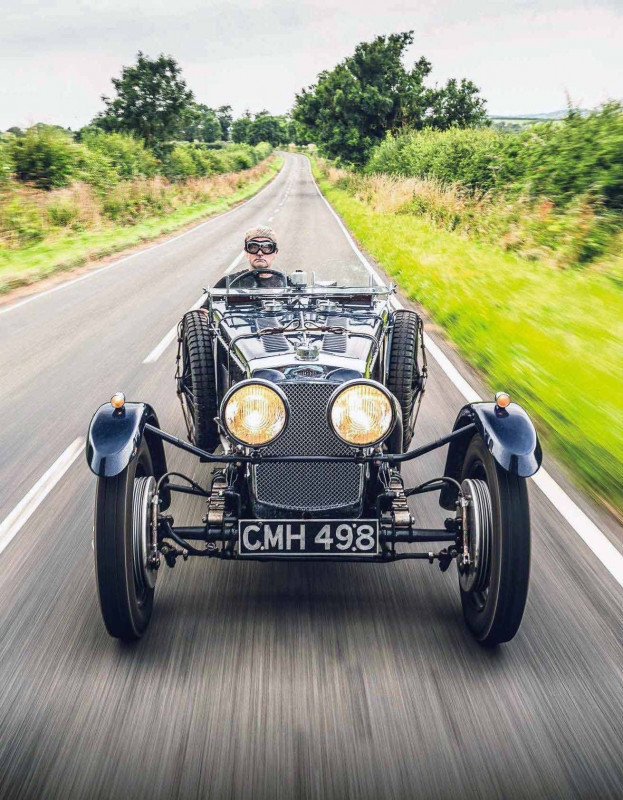
Folland blooded his Shelsley at the Brooklands Easter Monday BARC meeting on 22 April, finishing 13th of 15. This would be typical of his exploits with CMH 498, the exception being on 18 May at the Nash’s namesake hillclimb, Shelsley Walsh. Amid the frenzy of competition and record-breaking, an Isleworth trio won the 1 ½ -litre sports car class. First was Fane, second was Folland and third was Gordon Casswell in a TT Replica, The final classification spawned a tub-thumping Frazer Nash advert, which declared ‘Fastest Sports Car (irrespective of engine capacity)’ due to Fane’s 45.6 and 45.8sec times.
Given the 110mph performance potential of the Gough, Folland and Fane, along with Peter Mitchell-Thompson and Michael Collier (driving HF Wilmotts naturally aspirated 80bhp TT Replica), formed the first Frazer Nash Le Mans team. Lined up alongside 20 1001-1500cc cars, CMH 498 was (and forever would be) the only supercharged Frazer Nash ever to compete in the 24-hour race.
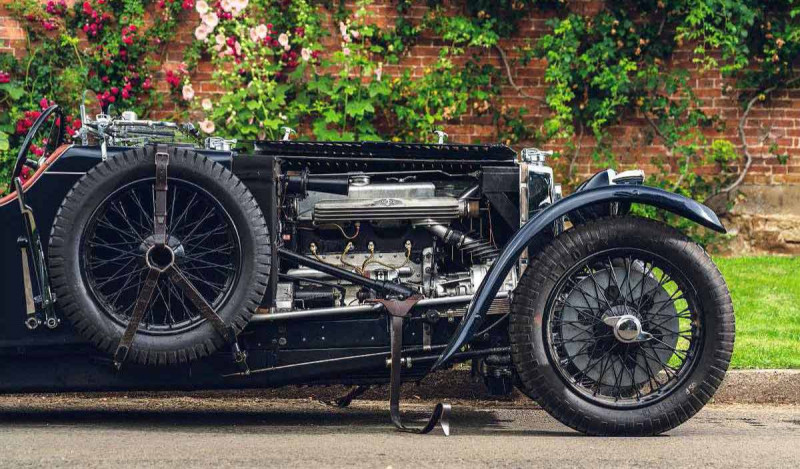
Above and right Shelsley is a rarity, with Frazer Nash’s own engine; classic interior fizzes with life on the move.
The pair made for a semi-official works entry, having been prepared at Brooklands by Robin ‘RR Jackson (in the ‘Robinery’, as his workshop was known), yet neither car finished, The TT Replica retired in the night, with a rod though the crankcase on lap 77. Then CMH 498 conked out with ‘radiator issues’ after 805 miles, on lap 96. It is believed that it also experienced an engine failure but, as its sister car had already retired for that same reason, the cause was ‘amended’ for the sake of the new engine’s reputation. It was never completely trouble-free, and the future for AFN Ltd and Frazer Nash was increasingly looking Bavarian.
When home, Jackson fitted CMH 498 with a white monoposto body, new crank, rods, modified cylinder head and front axle. After this, the car’s results took a turn for the better. First, Fane won the three-lap Senior in July, then Margaret Allan returned to the Nash, after an earlier Brooklands drive had resulted in a first-lap retirement.
Like Fane, Allan demonstrated CMH 498s true capability, as well as further proving the talents that had become evident behind the wheel of the Old Mother Gun Bentley. She lapped Brooklands at an unofficial 127mph, when the official 1500cc lap record belonged to Earl Howe in his Delage (127.05mph) yet, infuriatingly, the Nash would not behave for the timed runs. And Allan’s derring-do exploits at Brooklands for the first short handicap race on the 1935 August Bank Holiday meeting were reported in Motor Sport.
'Broken roads make the axles dance. Even the slightest turn and the Nash changes direction, rotating around you'
‘Miss Margaret Allan was greatly favoured to win. She was driving the white single-seater Frazer Nash owned by “Tim D Davies”, a car which was rumoured to have lapped at 122mph in practice. For some time it looked as though Powys-Lybbe would retain his lead… but a cloud of Frazer Nashes descended on him at the fork on the last lap. Miss Allan had already disposed of the rest of the opposition, and now she went on to win by 150yds [or seven seconds] from PF Juckers blown Nash and RG Percival’s unsupercharged model. Allvery satisfactory for Isleworth. Her 110.84mph average speed was magnificent.’
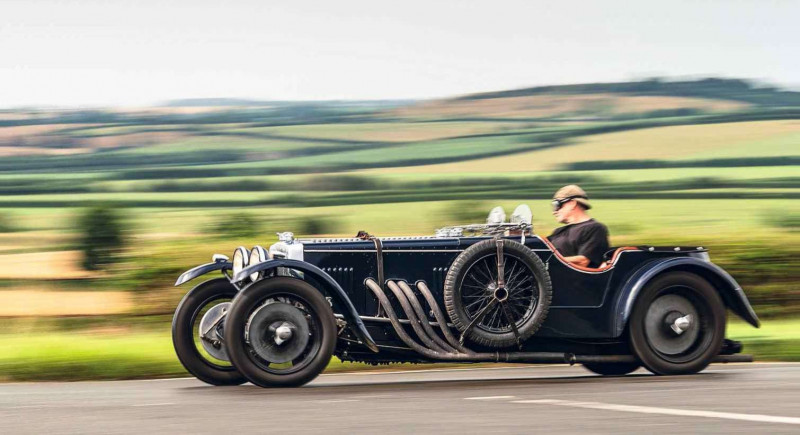
The following year at the Shelsley Walsh June meeting, Allan would battle against Kay Petre for the Ladies’ Trophy in very wet weather. While Petre would post 52sec in Fane’s Nash and a 51.0sec time in a blown Riley, she was unable to match Allan’s 48.0sec time. Not only did Allan win a Midland Automobile Club (MAC) Cup, and £25 for the ‘fastest car driven by a woman’, she also posted a time that was faster than the 3.0-litre supercharged and 5.0-litre supercharged class winners.
Although CMH 498 was entered for Le Mans in 1936, the race was cancelled due to problems with new regulations. Folland sold the Nash in 1937, but that wouldn’t be the end of its competition career. After passing through MAC president Sammy Newsome’s hands, the Nash was raced by Barry Goodwin (nephew of new owners, Jack and Dawn Palethorpe). Goodwin would post a personal best at Shelsley Walsh of 40.36sec, when Fane’s course record was 38.86sec. Sadly Goodwin, like Fane, would not survive his airborne War, so come peacetime the Palethorpes sold the Nash to Prescott regular Barry Woodhall, who kept the car until 1948.
At this point, an utter bounder entered CMH 498s story and committed a heinous act. One Bertie Bradnack dismantled the car and sold off chassis and engine separately. So between the 1950s and ’80s the disembowelled Nash languished in a barn, before being rescued by Russell Wilson-Kitchen.
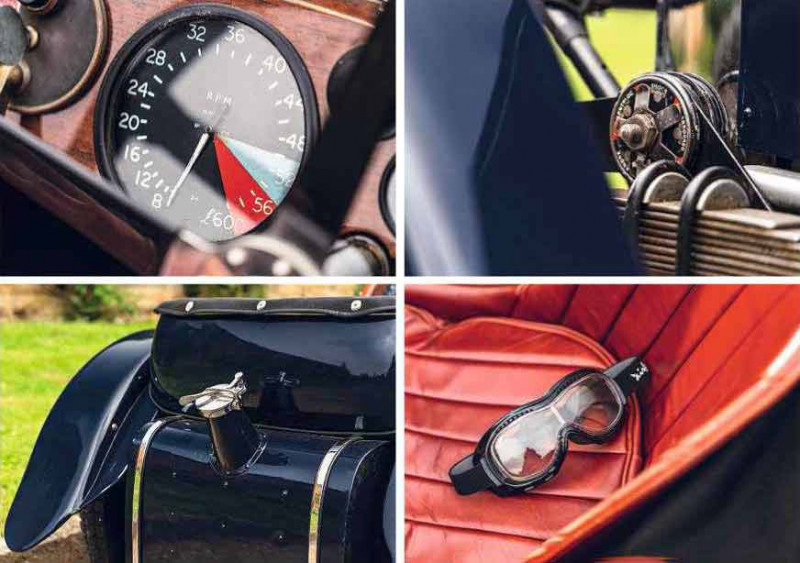
Left and above Minimal bodywork and folding ’screen leave driver exposed; note ‘£600’ rev limit...
Its owner in 1990, Tim Pryke, refitted the chassis with a two-seater sports car body and installed a BMW M328 straight-six. The Nash was then raced by Pryke’s daughter, Jo Blakeney-Edwards, who took over ownership in 2008. Blakeney-Edwards’ successes included a series of 2014 trophies (VSCC Ladies’ Trophy, FHCC Speed Events Trophy and FNCC Ladies’ Trophy) and it was she who sold CMH 498 to Mark Morgan in January 2015.
Her husband Simon and brother-in-law, Patrick — two well-known Frazer Nash specialists — were instrumental in tracking down and acquiring the original engine (no. 7/117) from an Austrian Super Sports replica, The overhauled and running Gough was reunited with the Nash in September 2019, producing 130bhp at 5500rpm (extrapolating to 140bhp at the 6000rpm redline) with 10psi of boost. Indeed, post-war, one of these Goughs — running at 23psi — was bench-tested and realised a mighty 151bhp at 5250rpm.
Morgan blames his brother-in-law and a drive in his TT Replica for his infection with the Nash bug. ‘I had a go in it and found it to be a wonderful, quirky, mad thing! I think the people who own Frazer Nashes are a very quirky crowd, They are unusual cars and they attract unusual people. I wanted one.’
In fact, he ended up with two — a Boulogne and a TT Rep — after providence decided to be awkward, but then: ‘I sold the Boulogne and someone made me an offer I couldn’t refuse for the TT Rep, so I ended up without a Frazer Nash! I looked around and this one came up. I like originality and I knew it had a great history but it had the wrong engine, although there were whispers it still survived. So I bought it with a view to returning it to how it was originally.
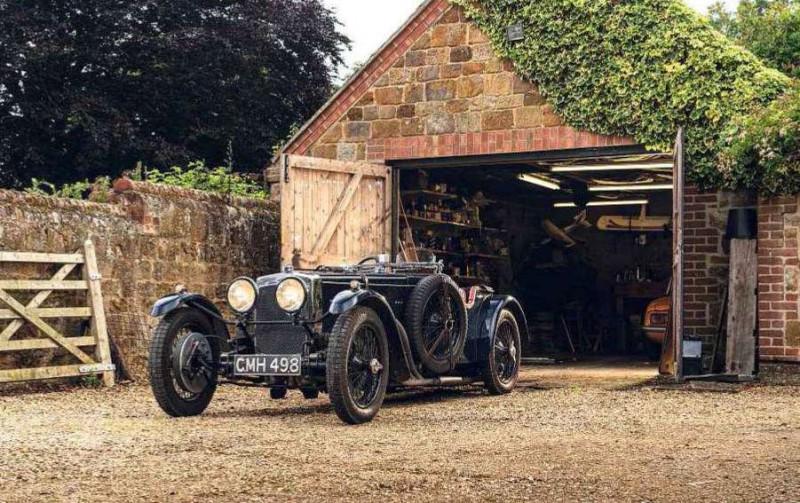
‘The body is new. So we used as much of the original car as possible — that’s its original fuel and scuttle tanks; all the running gear, gauges, and steering wheel are original. We had to take it back to the bare essentials to put the body back together because it was wrong. We used as much as we could from the original car but the lines of the body weren’t right, so Adrian Breeze — who is a real artist — modified it to get it back to how it was.
‘When we took it back to the chassis frame, it’s actually got the engine number stamped on it. You could see where the blowers were on the chassis frame, there are even the scrutineer’s marks from Le Mans! So it’s got fabulous history and it’s a lovely thing in that respect.’
Back to that gearbox — and yes, we have first! The Morgan technique for selecting that elusive bottom ratio involves placing the lever where first is — to the right and forward on this mirrored H-gate four-speeder — then ignoring the loose nothingness. You keep your hand on the lever, let the beefy clutch in and then it engages, the selector oversees vast dog gears and chains that spin away mere inches beneath you. Too many revs in first and the Nash takes a typical cartoonish forwards hop. The linear torque output from its blown engine and its direct drive boost acceleration further.
Left and below Rakish lines, blown engine and chain-drive make the Shelsley a characterful and rewarding car.
Broken roads make the quarter-elliptic sprung axles dance, the steering is quick, meaty and slop-free; even the slightest turn and the Nash changes direction, rotating around you. The narrow track of that solid rear axle needs little encouragement to step sideways, and the Nash’s toddler-like relish for twists ’n turns generates many smiles and chuckles.
Don’t expect frills, The windscreen remains folded, its aeroscreens provide the only shelter. A hood? How dare you! As speed grows, the burly boxer-like exhaust note is overwhelmed by the cacophony of roaring wind, drowning out any chance of hearing those far-off superchargers. Bracing rain comes and goes, splashing goggles, face, even your lap as water droplets sprint off the bonnet and down the dashboard, the whole car is full of vim, coursing with life, from its shivering spare wheels and chassis flex to the engine making the floorboards and your soles tingle.

There’s little point in (nor much opportunity for) consulting the haphazard dashboard, which includes a magneto switch from an Avro Lancaster and a tacho that some wag has modified with a ‘£600’ redline. The cable-operated 14in competition drums require muscle, clairvoyance and the odd tug of handbrake, so you stare ahead, scanning the view with laser-like intensity.
A long stretch of deserted single-track road stretches ahead, throwing itself down into a dip before climbing out and reaching a distant crest. ‘Go for it! Go on — go for it!’ implores Morgan with great glee. Up through the gears with my right foot flexed, the revs climb. Encouraged by the owner, the chassis’s remarkable straightline stability and pure feedback, I have no idea what speed we touch, The Shelsleys front axle was designed for greater high-speed stability and here it shines, The steering box is quick but also positive, which further helps your confidence, while the exposed cockpit makes the experience almost as thrilling as a motorcycle.
As we return to base, emotions are a frazzled blend of elation and relief, and the air is thick with the pungent cocktail of fuel, which contains two-stroke oil to lubricate the superchargers. It’s easy to understand why Nashes enjoy such kudos. It isn’t just that they represent the epitome of the sports car in its purest form, its that they are immense fun — as proven by my tired facial muscles.
The ignition is killed and the rumble of heavy metal takes the curtain call. Final words, though, should be left to the person who achieved this car’s greatest pre-war successes, Margaret Allan — one of George Eyston’s ‘Dancing Daughters’, who completed the 1935 Le Mans and who attained a Brooklands 120mph badge. And all that before doing her bit for the war effort, first as an ambulance driver and then at the secret decoding centre at Bletchley Park, The lady was as impressive as she has been overlooked, a racer who simply praised CMH 498 in Motor Sport as: ‘Quite the pleasantest out-circuit car I have ever handled.’
THANKS TO Mitchell Motors, mitchellmotors.co.uk
TECHNICAL DATA 1935 Frazer Nash Shelsley
- Engine 1496cc OHC four-cylinder, twin updraught SU carburettors, twin Centric vane superchargers
- Max Power 140bhp @ 6000rpm
- Max Torque 125lb ft @ 5000rpm
- Transmission Four-speed non-synchromesh manual, rear-wheel drive
- Steering Cam Gears Brooklands steering box
- Suspension Front: rigid axle, quarter-elliptic leaf springs, Hartford friction dampers. Rear: chain-driven live axle, quarter-elliptic leaf springs, Hartford friction dampers
- Brakes Vented drums
- Weight 840kg
- Top speed 110mph
- 0-60mph 8.0sec


